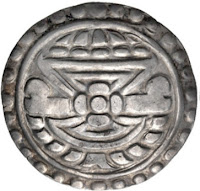The Pyu- city- states were a group of city-states that existed from 2nd century BCE to mid 11th century in present day Upper Burma (Myanmar). The city-states were founded as part of the southwest migration by the Tibeto-Burman speaking Pyu people, the earliest inhabitants of Burma of whom records are extant.
The Pyu culture was influenced by trade with India, importing Buddhism, and other cultural, architectural and political concepts. The Pyu calendar, based on the Buddhist calendar, became the Burmese calendar and the Pyu script, based on the Brahmi script, may have been the source of the Burmese script.
Of the 12 walled cities excavated thus far, five are the remains of largest Pyu states: Beikthano, Maingmaw, Binnaka, Halin and Sri Ksetra.
The long-lasting civilization that lasted nearly a millennium to the early 9th century until a new group of "swift horsemen" from the north, the Burmans of the Nanzhao kingdom began their raids of upper Burma starting around 754 AD. These raids continued till about 832 AD, when finally, Pyu country was overrun. By 10th century AD, the Pagan Empire was founded. Pyu settlements remained in upper Burma for the next three centuries, but the Pyu gradually were absorbed and assimilated into the expanding Pagan Empire.
The Pyu language still existed until late 12th century but by the 13th century, the Pyu had assumed the Burman ethnicity and disappeared into history.
Presently, the city-states of Halin, Beikthano and Sri Ksetra are designated as UNESCO World Heritage Sites.
Pyu Coinage. Minting and use of silver coinage originated from the 5th century and were the model for most first millennium coinage in mainland Southeast Asia. The earliest type of these coins is not inscribed and depicts a conch on one side and a Srivatsa on the other.
Obverse: Conch (Shankh), within circle of pellets
Reverse: Yupa within Srivatsa temple, two pellets below
Many coins had a hole along the perimeter and may have been used as amulets.
Obverse: Damru, five triangular and globular ornaments above, nine wedge shaped ornaments, all within beaded border
Obverse: Rising sun, 27 pellets in margin
Reverse: Srivatsa temple, swastika left, bhadrapitha right
Obverse: Bhadrapitha symbol, a drum tied in the center with diadems (Damru), five triangular and globular ornaments above, nine wedge shaped ornaments, all within beaded border
Reverse: Srivatsa symbol with sun and moon above, conch shell on the right and thunderbolt to the left, or stupa containing the tree of life, vajra to left, Shankh shell to right, the heavens above, primordial ocean below
Remarkably, after the use of coins ceased at the end of Pyu period in the late 9th century, coins did not reappear in the Burmese kingdom until the 19th century.













No comments:
Post a Comment
Any inputs or feedback is welcome!